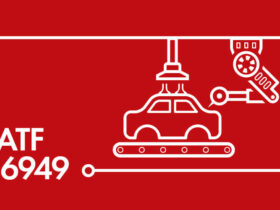Embarking on the journey of scaling up from lab scale pilot scale operations to full-scale production requires careful planning and consideration. This transition involves taking a small-scale laboratory concept and translating it into a larger, more practical version that can be used for commercial purposes. It is an essential step towards successful product launch and mass production. However, there are several key factors that need to be considered before making the leap from lab pilot scale to full-scale production. In this article, we will explore some of these key factors and provide helpful tips to ensure a smooth transition.
Importance of Equipment Selection
Choosing the right equipment is another critical aspect of scaling up. Equipment that is suitable for lab-scale operations might not deliver the same efficiency when applied to larger scales. It’s essential to review specifications and ensure the selected equipment can handle increased volumes without compromising on quality or safety. This careful selection process helps to avoid unforeseen issues that could delay production and increase costs.
Maintaining Product Consistency
Product consistency is paramount to the success of any scale-up process. Ensuring that the product’s properties remain uniform during the transition from lab scale to pilot scale can be challenging. Factors such as mixing times, shear forces, and residence times can all affect the final product. Implementing stringent quality control measures helps in maintaining the desired product characteristics and ensures customer satisfaction.
Addressing Safety Concerns
Safety should always be a top priority during the scaling-up process. Larger production scales often involve increased risks, such as higher pressures and the use of more hazardous materials. Comprehensive safety assessments and the implementation of robust safety protocols are vital to protect both personnel and equipment. This involves regular safety audits and risk assessments to identify and mitigate potential hazards.
Pilot Testing and Validation
Before moving to full-scale production, pilot testing and validation are essential steps. This phase serves as a rehearsal for the actual production, allowing for the fine-tuning of processes and the identification of potential issues. Successful pilot testing builds confidence and provides valuable insights that aid in smoothing the transition to full-scale manufacturing.
Transitioning from the lab scale to the pilot scale involves more than just increasing the size of the equipment. It requires meticulous planning, rigorous testing, and an unwavering focus on quality and safety. By paying attention to these key factors, businesses can achieve a smoother and more efficient scale-up process.
Frequently Asked Questions
Q: What is the primary challenge in scaling up from the lab scale to the pilot scale?
A: The primary challenge is ensuring that all process parameters and product characteristics remain consistent as the scale increases.
Q: How important is equipment selection during the scaling-up process?
A: Equipment selection is extremely important as it directly affects the efficiency and safety of the larger-scale operation.
Q: Why is pilot testing crucial before full-scale production?
A: Pilot testing is crucial to identify and resolve any process issues, ensuring a seamless transition to full-scale production.












